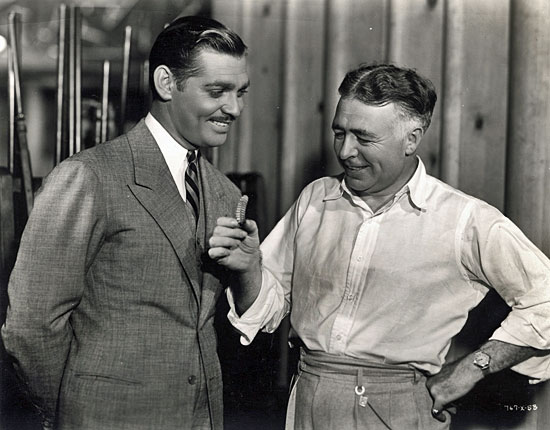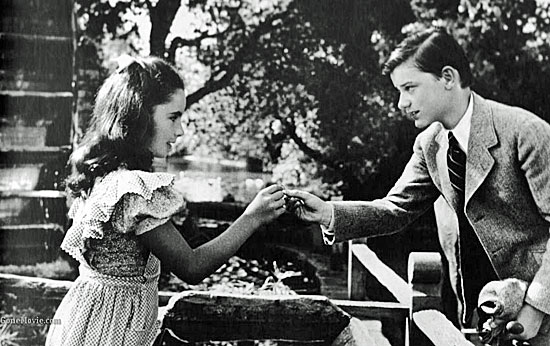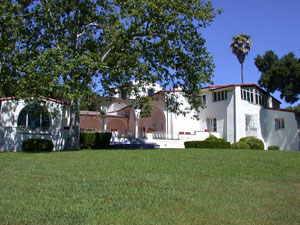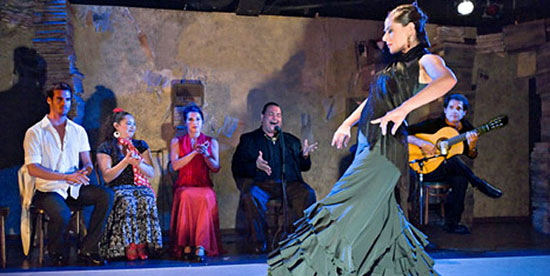LACMA “Rock” to roll tonight
February 23, 2012
Los Angeles art fans may feel like they’ve been waiting since the Stone Age, but it looks like that 340-ton boulder heading for LACMA could be on the road as early as Tuesday, if not the following week.
The Rock, as it has come to be known, is to be the centerpiece of a massive outdoor installation by artist Michael Heizer, who purchased it seven years ago from a Riverside County quarry. It has been waiting there ever since while museum officials worked with a heavy-haul transport company to negotiate its passage from the Inland Empire to the Mid-Wilshire District.
“Nothing is set in stone yet, no pun intended,” said LACMA consultant Meg Spieker Thomas, but all signs are that The Rock’s departure is nearing.
It was scheduled to roll last August, but its progress has been fraught with postponements. First its transporter had to be custom built and then its movers had to plot a surface-street route that could handle a hunk of granite the size of a 2-story building.
The route finally was settled back in October, but then problems arose as word leaked that this would be an unconventional shipment, and the haulers began to negotiate permits with the 21 cities and four counties through which The Rock required passage. Most communities were accommodating, but a handful raised multiple issues. At various points, intervention was required from members of the Board of Supervisors.
Despite the fact that most of the roads being used are longstanding truck routes, Chino insisted that blueprints and repair records be extensively researched to prove that the transporter wouldn’t damage water pipes serving Chino Hills homeowners. Lakewood and Long Beach called for tree trimming to ensure the transporter wouldn’t sideswipe their landscapes. Diamond Bar and Chino demanded that core samples of their pavement be tested. Gardena wanted special assurances that if its street lights were damaged the city would be reimbursed.
“Heavy hauls move through these cities every night,” Thomas said. “People failed to understand that this one was just getting special attention because of the art factor and the publicity.”
But by this week, most, if not all, concerns had been addressed and state permits had been issued for a Tuesday, February 28, departure. Haulers have already shrink-wrapped the rock and loaded it onto its special transporter. Should some snag arise, preventing a Tuesday departure, Thomas said the move would probably be rescheduled for the following week.
The rock will travel only at night, escorted by eight California Highway Patrol officers. During the day, it will be parked and watched over by four security guards. Its layovers, with one possible exception, will last only a day and most will be in the middle of various roadways, with space on either side for traffic to detour around it. The epic journey is expected to take nine or ten nights, traveling at less than 10 miles per hour.
The public will be able to track its progress via LACMA’s web site or a special museum hotline that will be made public as soon as The Rock hits the road.
Updated 2/25/12
It’s official. LACMA announced Friday that The Rock will roll Tuesday at 11 p.m.
Transportation, made possible by Hanjin Shipping, will take about 11 nights, covering 22 cities and four counties. The heavier half of a massive outdoor artwork, “Levitated Mass” by Michael Heizer, the 340-ton boulder will eventually be positioned over a 456-foot-long concrete slot on the LACMA campus. As visitors walk through the slot, the boulder will appear to be levitating.
It is scheduled to arrive at LACMA in the wee hours of Saturday, March 10, and open to the public in the late spring or early summer. Those who want to follow its progress can check LACMA’s Rock hotline at 323-857-6262 for questions, or click here for updates. Want to check out the route? Click here.
Old Hollywood lives on in mountains
February 23, 2012

Director Clarence Brown, right, worked with his friend Clark Gable on movies such as "Wife vs. Secretary."
This weekend, you could be mulling the merits of “The Artist” versus “The Descendants,” wondering what Rooney Mara will wear on the red carpet, or anticipating where Billy Crystal’s ad libs will take him.
Or you could be taking a walk in the footsteps of an all-but-forgotten movie giant named Clarence Brown—who never won an Oscar despite multiple Best Director nominations but is nevertheless enjoying a small measure of fame these days thanks to a Mountains Recreation and Conservation Authority volunteer named Michael Mooney.
Mooney has spent countless hours poring through National Parks Service archives and old newspaper articles to find out more about the life and times of Brown, who from 1930 to the early 1950s owned the legendary spread known as King Gillette Ranch. Mooney was joined in his research by National Parks Service Ranger Mike Malone, whom he describes as a “movie buff.”
For the past year, Mooney has been leading tours around the King Gillette property where Brown, once a spectacularly successful director for MGM, lived, worked and played with some of the biggest stars of Hollywood’s Golden Age.
How big? Well, Brown directed the young Elizabeth Taylor in National Velvet, worked with Greta Garbo in her first talkie, Anna Christie, directed Lionel Barrymore to an Oscar in A Free Soul, and gallivanted around with pals like Clark Gable.
And the King Gillette Ranch was central to much of the action—filming and social. Brown used it as a location for filming a number of motion pictures, including The White Cliffs of Dover, in which a young (uncredited) Elizabeth Taylor and Roddy McDowall held hands in a meadow on the property. There was also an airstrip, now vanished, where stars arrived for MGM “fly-in parties.” And a motorcourt on the estate once held a Rolls Royce limousine and other emblems of over-the-top wealth.
“It was one of those grandiose times,” Mooney says, noting that Brown commuted to work in Culver City from the ranch via open cockpit bi-plane.
Brown, who graduated from the University of Tennessee with a degree in mechanical and electrical engineering and owned an early automobile dealership before getting into the nascent movie biz, also did a fair amount of tinkering at the ranch, Mooney says.
His mechanical innovations included building a platform to mount a camera on the front of a car, as well as a wheeled camera dolly, Mooney says.
The ranch itself, which Brown sold to an order of the Catholic Church in 1952, is now public parkland. But its Hollywood connection is still alive and well on the small screen; the Wallace Neff-designed compound is now the setting for The Biggest Loser TV show.
As for Clarence Brown, his one-time property is still helping to tell his story, a quarter-century after his death at age 97 in Santa Monica.
There do not appear to be any close remaining family members. And for all of his movieland accomplishments, the oft-married Brown may not have been a particularly warm and fuzzy guy. “Most of his wives called him cold,” Mooney said. “He wasn’t ‘Ozzie and Harriet.’ ”
Still, Mooney, a real estate appraiser and Mountains Recreation and Conservation Authority volunteer since 2009, can’t help but marvel at the lives that Brown and his cronies lived.
“This was the heyday of the glory of the movie industry,” he said. “They could afford to do anything.”
Mooney’s easy two-hour walking tour, “Innovation in the Golden Era,” takes place on Saturday, Feb. 25, at 10 a.m. Details are here. Admission is free, but there is a $7 fee to park.

A young Elizabeth Taylor filmed a scene from "The White Cliffs of Dover" with Roddy McDowall at the ranch.
Posted 2/23/12
It starts at the top
February 23, 2012
Philip Browning is one of the smartest and most able public administrators on the local government scene anywhere in America.
We just named him to a job that will require every one of his talents—and then some.
As the new director of the county’s Department of Children and Family Services, Browning is leading the charge to reform a department in need of strong management after years of fear, indecision and secrecy that often kept policy-makers and the public needlessly in the dark. Too many vulnerable children ended up suffering and, in some tragic cases, dying when they should have been protected.
Now, Browning is hitting the re-set button at DCFS. It is a gargantuan task—so much so that I told him, not entirely in jest, that I was listening closely during his swearing-in ceremony last week to make sure I heard him say under oath that he was taking the job “freely and without mental reservation.”
Yet despite all the many challenges ahead, I feel hopeful about the future.
That’s because Browning is a real leader—someone who can move his staff forward through inspiration, not fear, and who gets results through competence and accountability.
He is able to articulate a clear vision for where the department needs to go. He gives everyone around him an opportunity to be heard.
And he’s a proven turnaround artist. His first assignment when he arrived in Los Angeles County in 2001 was to overhaul the county’s child support operation—which was so fraught with troubles that it was a rare day that my office, and every other supervisor’s, didn’t receive multiple complaint calls about it. Once Browning was through, the complaints had dwindled to near zero—and recoveries from deadbeat parents had skyrocketed by 36%. From there, he moved on to head the county’s Department of Public Social Services, which under his leadership was able to reduce the food stamp error rate and save the county sizeable penalties as a result.
Never have Browning’s skills been more desperately needed than at DCFS. His mandate is to completely transform the culture of a department where accountability and common sense have been in short supply, and where fear of making a wrong decision has frequently led to the worst move of all: doing nothing.
That’s not Browning’s style. Yes, he has genteel manners and a gentle Alabama accent, but this is one canny and decisive manager.
He hit the ground running when the Board of Supervisors asked him to take over the department as interim director last August. When he saw a spike in the placement of children in group homes—widely viewed as a less-than-desirable situation, especially for young kids—he stepped in with a new set of policies to discourage the practice. Now, 8-year-olds and younger children may not be placed in group homes without his personal approval or that of his chief deputy.
He believes in, and lives by, statistics. Metrics from each regional office are now beamed up on big screens for all to see—and act on—at monthly management meetings. Bulletin boards have been installed in all the regional offices, too, with the same statistics openly on display. In some ways, it reminds me of former Police Chief Bill Bratton’s statistics-driven approach to successful law enforcement.
But Browning is not just a numbers guy. He’s also a personable, hands-on leader. Staffers say they are encouraged and energized to have a top boss who communicates often and well, sets clear but ambitious goals and is a visible presence around the department. “We have much to do, but with you we can go all the way,” one manager told him the day he was appointed.
This isn’t a job that Browning sought. I’ll admit that I and others of my board colleagues had to work hard to persuade him to make the jump from interim to permanent director. But we appealed to his better angels and convinced him of how much the county, and its children, need him in this position.
It is a life-and-death challenge. These kids are the most vulnerable human beings in our society. Many have been literally bounced around—physically abused and shuffled from placement to placement. They deserve better.
In fact, they deserve the best. And we’re very fortunate that the best is now leading—with inspiration—from the top at DCFS.
Posted 2/23/12
Performing with surgical precision
February 23, 2012
Child prodigies of the Westside are teaming up with local doctors, but no need to worry—they’ll be performing Mozart, not open-heart surgery.
The Los Angeles Doctors Symphony Orchestra will play two all-Mozart concerts this weekend featuring the six winners of the Westside Music Foundation’s Robert Turner Piano Concerto Competition, an annual contest for kids ages 8 to 18.
The first three winners—Grace Kim, 16, Camille Ida Camacho De Beus, 15 and Eric Lin, 16—will play the Grand Lounge of the Ebell of Los Angeles at 743 South Lucerne Boulevard. The concert takes place Friday, February 24, at 8 p.m. Each student winner will perform one movement of Piano Concerto No. 8 in C Major, K. 246.
The other winners—Tristan Pardee, 11, Averi Suk, 11 and Serena Wang, 12—will perform movements of Piano Concerto No. 8 in C Major, K. 246 at Plummer Park’s Fiesta Hall in West Hollywood on Sunday, February 26. Concert time is 2 p.m. to give everyone a chance to get home for the Oscars.
Both concerts are $15 for adults, $10 for seniors and free for kids under 12.
The Doctors Symphony Orchestra is a health industry-based community orchestra that dates back to 1953. These days, not all members are actual doctors (though many are.) The organization raises money for medical charities by performing affordable concerts across Los Angeles County.
Posted 2/23/12
Creating a buzz at the museum
February 23, 2012
The vibrantly-costumed performers of Cirque du Soleil’s bug-themed OVO are swarming Santa Monica Museum of Art for “The Art Bug,” an insect-themed workshop.
Participants in the “family day” event will design and construct their own bug and specimen box from found natural materials and items like sequins, buttons and yarn. Expert artistic direction will be provided by contemporary artist Karen Nakashima.
The workshop also includes a 3-D photo booth for attendees to take pictures with the Cirque ambassadors. Following the workshop at 4 p.m. participants can enjoy a special performance of OVO at a 30% discount.
“The Art Bug” takes place Saturday, February 25, from 1 p.m. to 3 p.m. Admission is $10, and places can be reserved online. The Santa Monica Museum of Art is located at 2525 Michigan Avenue. Visit the Museum’s website for directions, current exhibitions and more.
Posted 2/23/12
Make way for Oscar
February 22, 2012
When Oscar comes to Hollywood, he brings glittering celebrities, high fashion, throngs of fans and of course, street closures and detours. If your path takes you to the vicinity of Hollywood and Highland, here’s what’ll you need to know to ensure you don’t get snubbed by the 84th Annual Academy Awards.
Lane and sidewalk closures began weeks ago to accommodate set-up for the awards. As the big day approaches, closures will become more frequent and larger in scale. A full list of planned closures is available on the Oscars website.
For Metro riders, the ceremony will mean a few temporary service changes. The Red Line Hollywood/Highland station will be closed all day Sunday, February 26 (trains will skip the stop.) Routes of buses that normally travel down Hollywood Boulevard will also be affected—see Metro’s online notice for details.
Posted 2/22/12
Reimagining an old dream
February 15, 2012

The Valley Performing Arts Center's Experimental Theatre is the setting for a new production of "Life is a Dream."
Centuries-old stories of European kingdoms take on new relevance in Milo Cruz’s Pulitzer prize-winning adaptation of Pedro Calderón de la Barca’s “Life is a Dream.” Students at California State University, Northridge (CSUN) will perform the new version beginning this weekend at the Experimental Theatre of the Valley Performing Arts Center.
“Life is a Dream” examines some of the deepest mysteries of reality. It ponders the tension between liberty and destiny and questions whether life is but an illusion. In Cruz’s adaptation, these questions are put in the context of a humankind that can simultaneously produce transcendent art and vicious genocide.
The production is the first directed by Larry Biederman, the new head of the school’s directing program.
The show runs February 17-19 and February 22-26. Curtain times are at 7:30 p.m. except for Sunday performances, which start at 2 p.m. Tickets are $20 for general admission, $17 for seniors and $15 for students. They may be reserved by calling (818) 677-2488. For directions and parking, please see the arts center’s website.
Posted 2/15/12
Seeking ultimate clarity in beach law
February 15, 2012
The beach-loving Ultimate Frisbee community has a message for the Board of Supervisors: Game on.
Several Ultimate Frisbee devotees, concerned about the impact of a new beach ordinance on their sport, came to the Hall of Administration Tuesday to give supervisors a piece of their minds—but ended up giving them a tutorial on the game, too.
“I don’t know what Ultimate Frisbee is. I’m sure it’s a great sport…But if you’re throwing projectiles around a beach when there are hundreds of thousands of people at the beach, the public safety comes first…It’s common sense that we’re asking you to employ,” board chairman Zev Yaroslavsky told the visiting players before asking them to explain their game.
“It’s a team sport. On the beach, it’s four on four or five on five, on a football-type field, not that big, with two end zones. And you advance the disc by throwing it to people on your team and you score by throwing it to a teammate in the end zone,” explained Alison Regan, a member of the Los Angeles Organization of Ultimate Teams, or LAOUT.
Yaroslavsky wondered how that would work in the midst of summer beach crowds: “So on a 90-degree day in Santa Monica in July or August, I would imagine it’s pretty tough to find space to have a game like this?”
“The beaches are large enough that we usually find some room,” Regan replied. “But we have to be accommodating, you’re right. When the public wants to walk through, we have to stop our play and we let the public walk through.”
It was the growth of new beach sports such as beach tennis and soccer that led to a recent liberalization of the county’s rules on ball-playing on the sand.
However, widespread erroneous media reports last week claimed that the county had enacted $1,000 fines for football and Frisbee playing at the shore, sparking a local uproar that quickly was heard ’round the world.
Although Department of Beaches and Harbors director Santos Kreimann moved to clarify the policy, saying that the new rules actually permitted football- and Frisbee-playing as long as it didn’t endanger other people on a crowded beach, the Ultimate Frisbee contingent was still troubled.
Tiffany Wallace, who plays on Solidarity Ultimate, which she described as a social justice Ultimate Frisbee team, said people should be allowed to use “Frisbees, footballs, soccer balls, even Ping Pong balls” at the beach without prompting “selective enforcement” under a too-vague ordinance.
Her sister, Julia Wallace, also addressed the board. “If the law is on the books, that’s enough to cause fear,” she said. “So it actually has to change.”
The board agreed. Supervisors, acting on a motion that Supervisor Don Knabe had submitted before the players testified, ordered a rewrite of the Frisbee- and ball-playing section of the new ordinance.
The new language should clearly state that “such activities by small groups and individuals are allowed at all times on the County beach” unless lifeguards direct otherwise for public safety reasons, the motion said.
Supervisor Mark Ridley-Thomas suggested that the players come back for an Ultimate Frisbee demonstration sometime.
And on their Facebook page, Ladies of La—Women’s Ultimate Frisbee, the disc-hurling activists declared victory.
Posted 2/15/12
Andalusian dancing in the park
February 15, 2012
That’s not thunder you’re hearing—it’s the rhythmic stomping of flamenco dancers.
This Sunday, East Hollywood hosts the latest installment of “Forever Flamenco,” featuring the energetic sounds and moves of Compañía Manuel de la Cruz. The eponymous dancer and artistic director will join San Francisco guitarist Jason “El Rubio” McGuire and singer José Cortés, from Spain.
The show takes place in the Barnsdall Gallery Theatre, which presents diverse theatre, dance, music, spoken word performances, lectures and films at low cost to the public. The theatre is one part of the city-run Barnsdall Art Park. The park is also home to famed architect Frank Lloyd Wright’s Hollyhock House, the Municipal Art Gallery and art workshops for children and adults.
Compañía Manuel de la Cruz, presented by Fountain Theatre, takes the stage February 19 at 8 p.m. Tickets to the event range from $25 to $45 and may be purchased online or reserved by calling (323) 663-1525. Directions, park hours and other details are available on the art park website.
Posted 2/15/12


















 Check for the latest closure information
Check for the latest closure information








